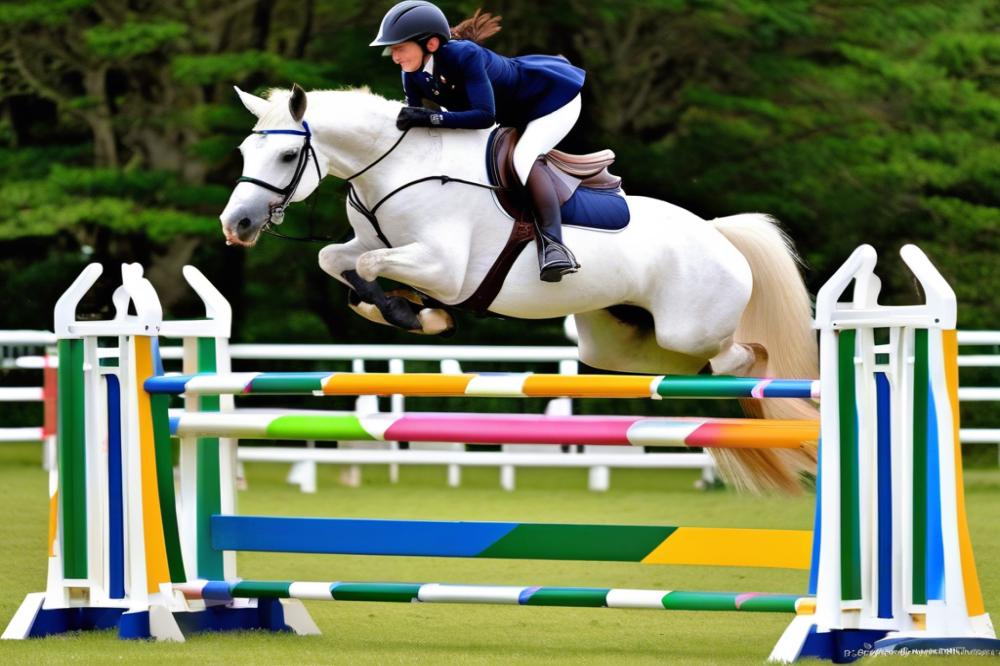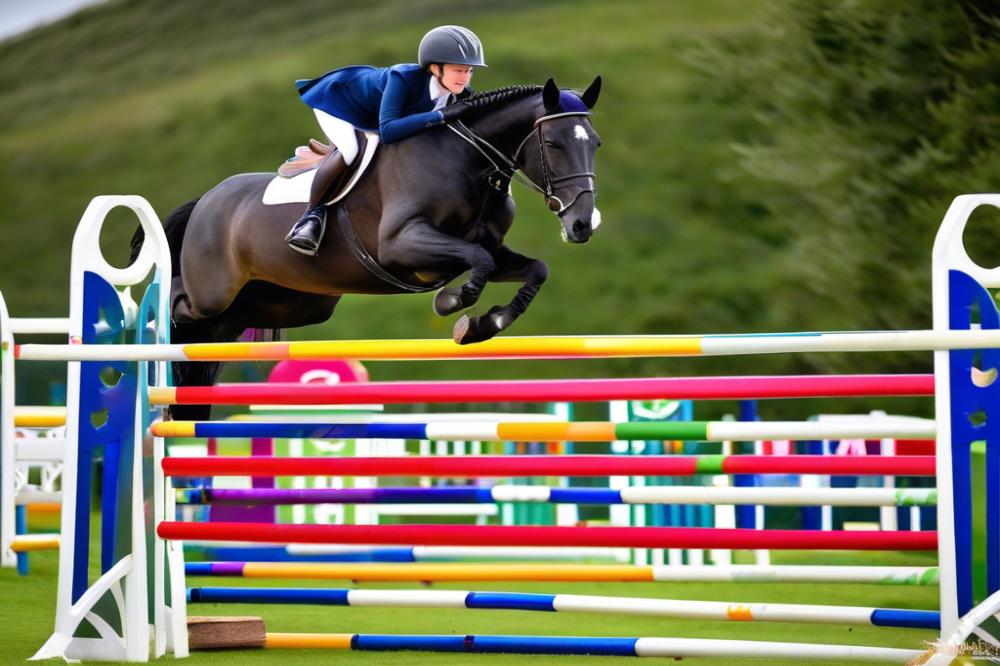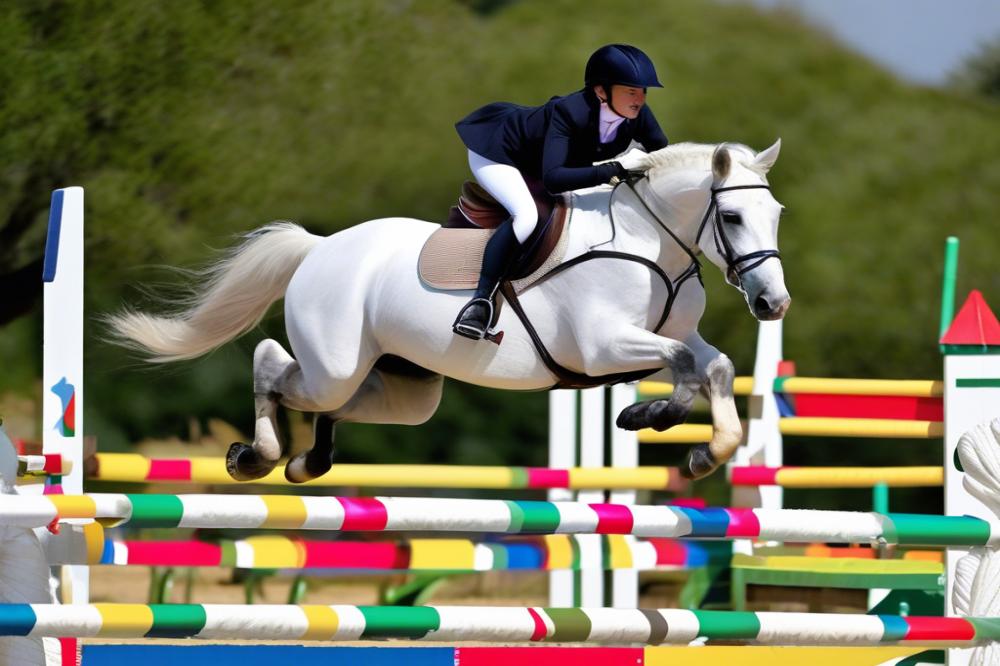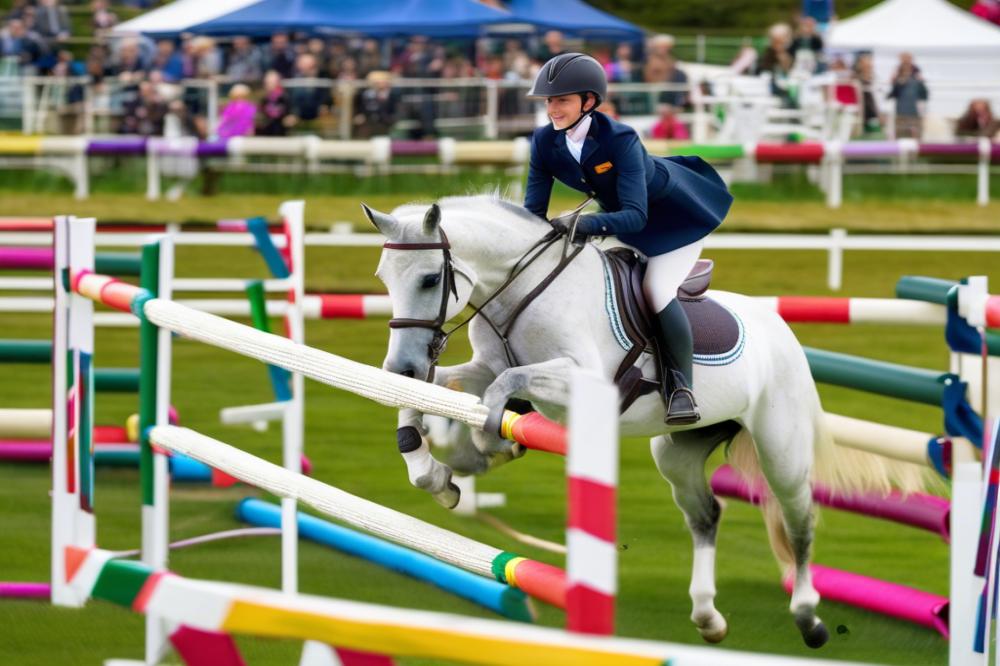Overview of Connemara Ponies in Showjumping
Connemara ponies have earned a cherished place in the world of showjumping. Their athletic abilities are complemented by a sturdy build and an agreeable temperament. Many riders admire these ponies for their versatility and intelligence. They excel in competitions, showcasing impressive skills over jumps and obstacles.
The importance of riding techniques cannot be overstated. Proper methods not only improve performance but also promote safety for both pony and rider. Mistakes can lead to injuries, so being mindful of best practices is crucial. Focusing on effective riding can make a significant difference in the outcome of any competition.
In this article, we will explore several best practices for riding a Connemara Pony in showjumping. Topics will include effective communication with the pony, the importance of proper training, and techniques to enhance performance. By adhering to these strategies, riders can develop a better partnership with their ponies and achieve greater success in the showjumping arena.
Connemara Pony Showjumping: Understanding the Breed

Characteristics of Connemara Ponies
Connemara ponies are known for their sturdy build and graceful movement. They typically stand between 12.2 and 14.2 hands, making them a height suitable for a variety of riders. These ponies have a thick mane and tail, which adds to their striking appearance. Many possess a strong back and powerful hindquarters, which give them the ability to jump well. Temperament plays a crucial role too. Connemaras are often described as intelligent and willing, making them eager partners in any equestrian endeavor. Their overall appearance exudes a sense of strength balanced with elegance.
Advantages of Connemara Ponies in Showjumping
Showjumping offers young riders and experienced equestrians the chance to shine. Connemara ponies excel in this discipline due to their agility. They can navigate tight turns with ease, allowing them to tackle courses that pose challenges. A Connemara’s strong hindquarters provide the lift needed to clear obstacles. With a naturally curious disposition, these ponies approach jumps with confidence. Riders can trust them to be careful yet bold. Their adaptability in different environments is another benefit. Whether training in an indoor arena or competing outdoors, these ponies perform at their best.
Historical Significance in Equestrian Sports
The history of Connemara ponies traces back to Ireland’s rugged landscapes. Originating in the Connemara region, they were bred for agriculture and transport. Over time, their performance in various equestrian events grew noticeably. Competitive riders soon recognized their potential in showjumping. Today, these ponies have established a reputation not only in Ireland but also worldwide. Their participation in competitions showcases their versatility. Many Champions have roots traced back to the Connemara breed. Riders appreciate the deep connection they share with these ponies, built on trust and mutual respect throughout the years.
Essential Horse riding techniques

Proper riding posture plays a significant role in showjumping. A straight back and relaxed shoulders create a strong foundation for communication with the pony. Elbows should remain soft and positioned close to your sides. This established alignment allows for better control and balance.
Correct seat and leg position contributes to effective riding. Your seat should be deep in the saddle, which helps maintain stability. Ideally, legs should hang naturally, with heels down for support. This positioning enables you to give clear aids to the Connemara Pony while navigating the course.
Balance is crucial during a jump. As the pony approaches an obstacle, leaning slightly forward can aid in taking off. Keep your body centered, and don’t shift weight to one side. This balanced position helps the pony clear the jump smoothly and efficiently.
Understanding horse agility enhances showjumping performance. Connemara Ponies are known for their quickness and flexibility. A rider must recognize how these characteristics can be utilized. Predicting how the pony will respond to different jumps makes a big difference in the overall outcome.
Adjusting your riding style based on agility can improve your results. Pay attention to the pony’s movements, and maintain a light contact with the reins. This connection lets you feel changes in speed and direction. It also empowers the pony to move freely while keeping you in control.
Jumping Form and Technique

Key Components of Good Jumping Form
Having a solid jumping form is essential for both rider and pony. A balanced position helps the pony clear obstacles effectively. Keep your heels down and maintain a straight body line from head to toe. Arms should be steady and slightly forward. This position allows for better control over the jump.
Correct Approach and Takeoff Techniques
The approach to a jump is crucial. A steady rhythm sets the foundation for a successful leap. As the pony approaches, focus on maintaining a straight line. Let the pony find its stride naturally. At the takeoff point, apply gentle pressure with your legs. This encourages the pony to push off the ground. A strong, coordinated takeoff can greatly impact the jump’s height and style.
Landing and Maintaining Momentum
Post-jump, landing is just as important. Aim for a smooth landing to keep the momentum alive. After clearing the obstacle, relax your body and stay centered. This helps in preparing for the next jump. A well-timed release of the reins can allow the pony to regain its balance. Keep an eye on the next obstacle, as maintaining focus helps in seamless transitions.
Common Jumping Mistakes to Avoid
Several mistakes can hinder performance in showjumping. One common error is jumping ahead of the pony. This can throw off their balance and cause awkward landings. Failing to maintain a correct rhythm can also lead to problems. Try not to pull on the reins too hard, as this can confuse the pony. Lastly, neglecting to look ahead may result in missed turns or lost momentum.
Connemara Pony Care for Performance
Daily care routines serve as the foundation for peak performance in Connemara ponies. Each day, the pony should be groomed, which helps maintain a healthy coat and skin. Start with brushing to remove dirt and loose hair. Follow this with a hoof check to ensure there are no stones or debris lodged in the hooves. Clean the hooves meticulously and apply hoof oil for added protection. Regularly inspecting gear for wear is another important task. Well-maintained tack contributes to the pony’s comfort and performance.
Nutrition plays a critical role for jumping ponies. A balanced diet is essential for strong muscles and stamina. High-quality hay provides the necessary fiber, while a mix of grains and concentrates can supply energy and nutrients. Adding vitamins and minerals can support recovery after training. Always monitor the pony’s weight and adjust feed amounts accordingly. Fresh water should be available at all times as hydration is key to optimal health.
Regular veterinary checks are vital to a pony’s overall well-being. Schedule assessments at least once a year to catch any health issues early. Vaccinations and dental care should not be overlooked. A qualified veterinarian will help maintain the pony’s health, contributing to performance success. Moreover, farriery is equally important. Hoof care should be performed every six to eight weeks. Properly trimmed hooves promote soundness and improve jumping ability.
Grooming practices extend beyond basic brushing. A clean pony is less prone to skin issues and tends to feel better overall. Use a curry comb to stimulate the skin and promote circulation. A soft brush can then be used for a final polish. Pay special attention to the mane and tail, using mane conditioner to prevent tangles. Regular grooming sessions create a bond between rider and pony, fostering trust and partnership.
Showjumping Tips for Success
Competition Preparation Strategies
Preparing for a competition takes careful planning. Begin with a checklist of what your Connemara Pony will need. Equipment like tack, bridle, and grooming supplies should be ready the night before. Checking all gear for signs of wear is essential for safety. Lay out your riding clothes and boots to avoid morning chaos. Arriving early at the venue allows time for your pony to settle into the new environment. A calm pony is a focused pony.
Practicing with Different Course Designs
Variety is crucial when training for jump courses. Set up different obstacles at home that simulate possible competition layouts. Use a mix of verticals, oxers, and combinations to enhance your pony’s adaptability. In addition, practice courses with varying distances between jumps. This will help build confidence and competence in your pony. Each jump should not just be a challenge but an opportunity to connect with your mount.
Techniques for Improving Speed and Agility
Focus on building strength and quickness through tailored exercises. Hill work is excellent for developing the muscles needed for jumping. Incorporate trot and canter transitions to refine responsiveness. Most ponies benefit from lateral movements, so include some side passes or shoulders-in if possible. Use ground poles in lines to encourage better footwork. Such techniques not only enhance your pony’s performance but also boost your partnership.
Importance of Mental Preparation for Both Rider and Pony
Mental readiness plays a significant role in showjumping. Begin by visualizing your course before stepping into the arena. Picture your pony jumping each obstacle with ease. Practicing relaxation techniques can calm both the rider and pony’s nerves. Moreover, establish a routine that helps you both feel secure and focused. A confident atmosphere can greatly impact performance during competition time.
Showjumping Equipment for Connemara Ponies
Participating in showjumping requires specific equipment for both the pony and the rider. Essential items include a suitable saddle, bridle, and protective gear. A well-fitted saddle is crucial for comfort and performance. It allows the Connemara to move freely and jump without restrictions. Choosing the right bridle can enhance communication between the rider and the pony. Look for one that fits well and suits the pony’s temperament.
When selecting tack, consider the unique shape and size of Connemara ponies. Not all equipment is created equal. A proper fit can prevent discomfort and potential injuries during training or competition. Materials should be durable yet soft enough to avoid chafing. Seek out tack specifically designed for ponies to address their specific needs. This choice can make a difference in how effectively the pony performs.
Safety gear for riders is as important as the tack used on the pony. A quality helmet is a must-have, providing protection in case of falls. Proper footwear should have a heel to prevent slipping from the stirrups. Additionally, body protectors can minimize injury risk, especially during intense jumping exercises. Always prioritize safety when riding, as it sets a good example for younger riders and promotes responsible behavior.
Maintaining equipment is essential for achieving the best results. Regular cleaning of the saddle and bridle keeps them in good condition. Check for wear and tear frequently. Adjust the fit regularly as the pony develops or as their training progresses. Equipments that are well-maintained contribute to safety and comfort, which leads to improved performance. Keeping everything in working order should be a consistent part of your routine.
Wrapping Up Best Practices for Riding a Connemara Pony in Showjumping
Recapping the best practices for riding a Connemara Pony reveals key elements that can enhance both the rider’s experience and the pony’s performance. First, maintaining a balanced position in the saddle is crucial. A poor posture can limit effectiveness during jumps. Next, cultivating clear communication between the rider and pony fosters confidence and understanding, making the partnership even stronger.
Using the right gear plays a significant role, too. The tack should be comfortable and well-fitted to avoid unnecessary distractions or discomfort for the pony. Moreover, practicing regularly builds muscle memory and refines skills. Set aside time for groundwork, as it can greatly improve the bond you share with your pony. Consistency in training will pay off during actual showjumping events.
Embracing these techniques will likely lead to improved performance, making all the hard work worthwhile. Keeping a positive attitude can also elevate both your and your pony’s spirit. The supportive environment during training sessions encourages growth and confidence.
Lastly, the bond between rider and pony is invaluable in equestrian sports. This connection is founded on trust and understanding. Every time you ride, you deepen that relationship, which ultimately enhances performance. Focus on nurturing this partnership, and it will lead to both remarkable achievements and unforgettable moments in your horse riding journey. Remember, with proper practice and care, both you and your Connemara Pony can shine in showjumping!



